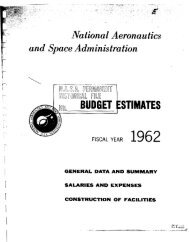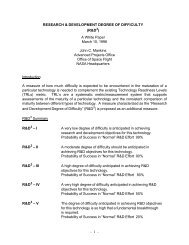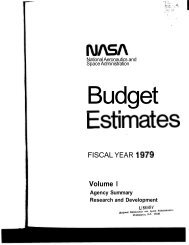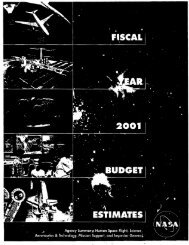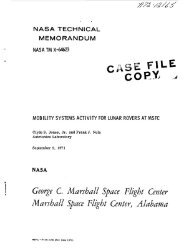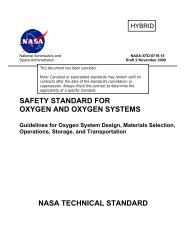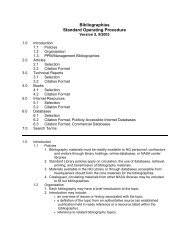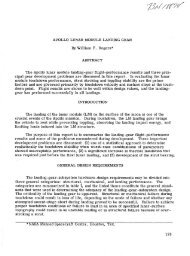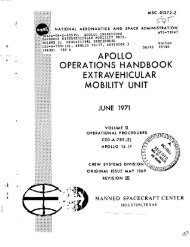crimping, interconnecting cables, harnesses, and wiring - NASA
crimping, interconnecting cables, harnesses, and wiring - NASA
crimping, interconnecting cables, harnesses, and wiring - NASA
Create successful ePaper yourself
Turn your PDF publications into a flip-book with our unique Google optimized e-Paper software.
Page 68 of 114<br />
<strong>NASA</strong>-STD-8739.4 with Change 6<br />
CAUTION: CARE SHALL BE EXERCISED WHEN POSITIONING<br />
AND TORQUING CONNECTOR BACKSHELL TONGS,<br />
STRAIN RELIEF CLAMPS AND OTHER STRAIN RELIEF<br />
MEMBERS. THE PROPER POSITIONING OF THESE<br />
DEVICES WILL PREVENT THE SHARP BENDING OF<br />
AND SUBSEQUENT DAMAGE TO HARNESSES DURING<br />
THEIR INSTALLATION OR OPERATIONAL USE.<br />
13.6 Assembly of RF Connectors <strong>and</strong> Coaxial Contacts<br />
Many types of RF connectors <strong>and</strong> coaxial contacts are available. Electrical performance,<br />
together with other considerations, affects the selection of the connector <strong>and</strong> coaxial cable.<br />
Depending on the requirements, assembly procedures vary from normal shop practice for <strong>cables</strong><br />
operating at less than 1 gigahertz (GHz) to precision techniques for those operating up to 18<br />
GHz. Generally, the following practices shall be observed:<br />
13.6.1 The assembly shall be made in accordance with the connector manufacturer's<br />
instructions; however, many manufacturer's instructions are not adequate <strong>and</strong> may cause<br />
problems (Requirement). See Appendix B for a discussion of frequently encountered<br />
workmanship problems.<br />
13.6.2 Connectors shall not be modified (Requirement).<br />
13.6.3 Special tools necessary for the fabrication shall be specified on the assembly procedures<br />
(Requirement).<br />
13.6.4 Torque values, when applicable, shall be specified on the engineering documentation<br />
(Requirement).<br />
13.7 Process Controls for Two-Piece Crimp Rings <strong>and</strong> Stub-Type Splicing Devices<br />
13.7.1 Test Interval. The crimp tools <strong>and</strong> crimped ring conductor(s) combination to be used in a<br />
production run shall be tested at the start <strong>and</strong> at the end of each work shift or production run,<br />
whichever is shorter (Requirement). Test results shall be recorded <strong>and</strong> maintained for each<br />
crimp tool <strong>and</strong> crimped ring conductor(s) combination (Requirement).<br />
13.7.2 Number of Test Samples. A minimum of three test samples shall be prepared for each<br />
crimp tool <strong>and</strong> crimped ring conductor(s) combination, at the intervals specified in 13.7.1<br />
(Requirement).<br />
13.7.3 Test Method. The sample crimp rings <strong>and</strong> stub-type splicing devices shall be placed in a<br />
tensile-testing device with appropriate fixtures, <strong>and</strong> sufficient force shall be applied to pull each<br />
individual wire to the value specified in Table 13-1 without movement or pulling of the wire<br />
from the crimped ring or breaking of the wire or the crimped ring (Requirement). The head<br />
travel speed of the tensile device shall be 25.4 +/- 6.3 mm (1.0 +/- .25 in) per minute. The<br />
holding surfaces of the tensile device clamp may be serrated to provide sufficient gripping <strong>and</strong><br />
holding ability.<br />
13.7.4 Required Crimp Strength. The tensile strength of the crimp test sample connections shall<br />
be in accordance with Table 13-1 (Requirement). For those crimped ring conductor(s)



